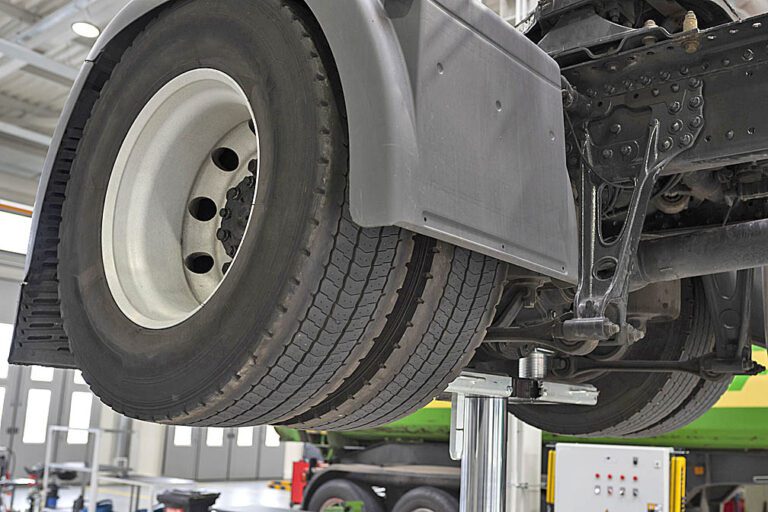WASHINGTON — Ahead of this year’s International RoadCheck, which begins on May 16, the Commercial Vehicle Safety Alliance (CVSA) has issued two inspection bulletins related to braking aids and automated tire inflation systems (ATIS) on semi-trucks that, if improperly used, could result in failed safety inspections.
According to one bulletin, the “hill start aid” and/or “brake hold mode” functions that automatically keep the service brakes applied after the tractor is taken out of gear and the service brakes are applied may activate at the beginning of an inspection.
“If so, the brake lamps will remain on, and the service brakes will also be activated. This inspection bulletin is intended to provide information on both systems so that inspectors can ensure they understand the system functionality and the system is not enabled during an inspection,” according to the CVSA.
CVSA said its inspectors have found that, based on how the driver pulls in and stops for inspection, the brake hold mode or hill start aid may activate, and the driver may be unaware the system is activated and/or may not know how to deactivate the system for inspection.
This may result in inaccurate violations if the inspector and/or driver are not aware of how the system(s) function.
Regarding ATIS, the CVSA notes that some models automatically adjust tire pressure based on the load on the trailer.
“An ATIS that responds to the load will reduce the tire pressure when some of the load is removed or increase pressure as weight is added,” the CVSA inspection bulletin states. “There are also tire pressure systems that reduce the tire pressure for off-road applications, typically used in logging operations. These systems are usually identified as central tire inflation systems (CTIS).’
However, the CVSA notes, “these systems are generally activated manually, as needed. Minimum tire pressures for a given tire load are listed in the ‘Tire and Rim Association Yearbook’ for each tire size and configuration. TPMS(Tire Pressure Monitoring System) may be standalone or coupled with ATIS to track tire pressures in real time, ensuring the ATIS is keeping the tires at the proper tire pressure.”
An ATIS is not required equipment on commercial motor vehicles, and as such, is not required to be operative, the CVSA pointed out.
“If an ATIS is defective, inoperative or in an alert status, there is no corresponding violation; however, if a faulty or defective ATIS causes a violation of the Federal Motor Carrier Safety Regulations (FMCSRs), that individual violation should be addressed on a roadside inspection (e.g., flat tire, air leak other than normal system operation),” the CVSA stated. “If the ATIS is in alert status, further investigation may be warranted to determine if there is a violation of the FMCSRs present.”
The Trucker News Staff produces engaging content for not only TheTrucker.com, but also The Trucker Newspaper, which has been serving the trucking industry for more than 30 years. With a focus on drivers, the Trucker News Staff aims to provide relevant, objective content pertaining to the trucking segment of the transportation industry. The Trucker News Staff is based in Little Rock, Arkansas.














